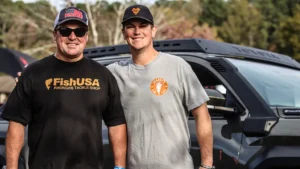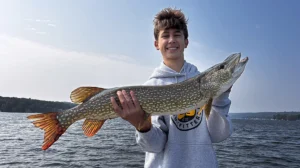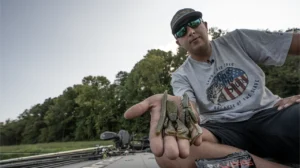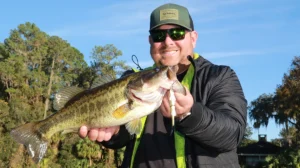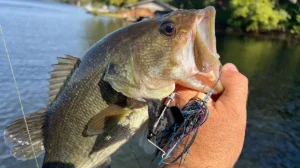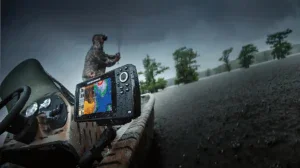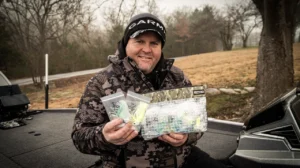Kayak fishing tournaments have exploded in numbers these past few years, with participation levels at an all time high. Unlike bass boat tournaments that keep their catches in a live well and weigh them in at the end of the day, kayak tourneys utilize measurements of the fish, which are released afterwards. The fish is measured and photographed, and the photos are usually submitted through an online app that records the catches. This article focuses on the evolution of the kayak fishing bump board.
So the question is how do they accurately measure the fish to determine the winner in a kayak fishing tournament? This was a bit of a challenge at the earliest contests, but now there are multiple ways to accurately measure fish, even with them flopping around in your lap. Let’s take a look at the evolution of the kayak fishing bump board, a device that permits the angler to lay the fish down in it and “bump” it to the end to obtain an accurate measurement, and how they became accepted by most kayak fishing organizations.
THE EARLY DAYS OF KAYAK FISHING TOURNAMENTS
There are a few different roads kayak fishing tournaments have taken to get where they are today. Here in the Great Plains, the idea of organizing a kayak fishing tournament was first tossed around almost two decades ago. But, we didn’t know how we could possibly keep fish alive in a well on a small kayak. Thus, our first tournament was conducted with a checklist of species on a piece of paper.
Our first tournament included nine species of fish. Each angler was given a small pencil and checklist in a sandwich size clear ziplock bag. When the angler caught a certain species, they would place an X in the checkbox on the card. The angler with the most species caught was the winner. Yes, it was an honor system. We had three checkboxes for each species of fish. It was a lot of fun and we gave away a small kayak and trophies to the winners.

The possibility of someone being blamed for cheating came up during the following months so we went to a retractable tape measure and a digital photo of the fish the following year. The added responsibility of photographing a fish on a narrow kayak became a new skill to learn, and it’s no easy task, especially for the beginning kayak angler.
At first, most anglers laid the fish down in the kayak or went to shore and put the fish on the ground. The angler would place the fish on or next to the tape measure and snap a picture with a digital camera. After the tournament ended, we would take a look at each angler’s photos individually and judge the length. The angler with the most inches of fish was determined the winner. At this time we were still allowing multiple species to be entered. We allowed the fish’s mouth to be open in those days as there wasn’t a way to keep it closed, and didn’t have any rules established for holding the fish down. This would eventually prompt the use of an official bump board, which would help with consistency.
We also used an “identifier” that the angler placed in the photo to solidify that the fish was caught during tournament hours. The unique identifier code usually included letters and numbers on a small card. After a photo was taken, the fish was then quickly released. For online tournaments, we required the measurement photo and a “hero shot” where the angler held the fish up next to their face and snapped a quick photo to verify they caught it. The identifier was required to be in this picture as well.
THE INTRODUCTION OF THE KAYAK BUMP BOARD
Then came along the “Golden Rule,” which was a metal board with an upturned end that allowed more accurate measurements. The term “bump” came about with the vertical plane on one end that the angler places the nose of the fish to be in contact with the zero mark. This measuring board, with its laser-engraved marks, made it much easier to determine the length of the fish, even inside a kayak cockpit. As good as it is, it has some issues. The gold color makes the engraved increments difficult to see in photos, and the metal construction means it would sink fast if dropped, making a lanyard a necessity. Despite these shortcomings, it is still used by anglers in other avenues to measure their fish.

Hagen’s Fishing Component’s out of South Dakota came up with the idea of a plastic bump board that was lightweight and easy to use, especially from the kayak. The “Hawg Trough” as it is called soon became the standard of measurement for kayak anglers, capable of measuring fish from 8 to 30 inches, with markers placed every quarter inch. Although there is no printing on the marks, an angler can take a black sharpie and highlight them so they are more visible in photos. These would also sink if dropped in the water, so some anglers glued quarter-inch wooden dowels, which enabled them to float and provided more support for heavier fish. I remember purchasing several cases of Hawg Troughs from Hagan’s and selling them out of the back of my truck at tournaments back in the day.
These boards were accepted by all major fishing trails across the country, and were used for a few years nationally until it was determined that it could be bent in such a way as to gain a quarter inch on a fish. There was also an instance in which an angler cut the board down and put it back together, holding their hand over that part of the board giving their fish an appearance it was longer than it was. In spite of this, they are still used by numerous anglers and entry level tournaments, probably because they are so affordable.
MODERN KAYAK FISHING BUMP BOARDS
Just a few years ago, YakGear came out with the Fish Stick. The floating Fish Stik was designed for the kayak angler, with a folding design that goes from 12 to 36 inches for easy storage. It also has a 3.5 inch tall raised lip and a line slot which is supposed to minimize stress on the fish, but unfortunately most tournament organizations do not allow the line to be attached to the fish when measuring. Available in three colors, the Fish Stick ships with a marker so that the angler can highlight the marks so that they can be easily seen in photos. Unfortunately,, the Fish Stik could be manipulated like the Hawg Trough so it never really made an appearance in the competitive fishing world.
The Ketch Board came on the scene around the same time, and gained quick acceptance by every national kayak fishing organization. Today, the Ketch board is the most widely accepted and trusted tournament bump board in local, regional, and national kayak fishing trails. Available in aluminum or carbonate plastic; both are very durable. There are lengths from 16 inches all the way up to a folding 64 inch board. Personally, I like to use the carbonate board as it is much lighter.
Even more intriguing is that some models of kayaks are now designed to have the bump board fit in the cockpit for easy measuring and photography. The Leaderboard, manufactured by YakAttack, is engineered to work with most kayak cockpits, and offers a combination of features which make the measuring experience much easier. These include a dedicated leash point, a built-in dual identifier holder, and sliding cull tabs for better tracking capabilities. It is also designed to accommodate the shape of the fish, a little wider overall than other boards, but gives a more natural presentation for photos. There is also a visual indicator that gives a mirrored surface so that there is no question of a gap between the fish and the board. This eliminates flex and glare, and the buoyant construction floats if it were to fall overboard. The 28-inch long Leaderboard is already being accepted by most major trails across the country, providing another option to certify catches effectively. The “Leaderboard” can be easily fastened to the kayak with the YakAttack “Double Header” track mount bracket.

For longer fish like muskie or catfish, the Muskie Bump Board is widely used in kayak fishing tournaments. The original Muskie Bump Board can measure fish up to 60 inches in length and is 8 inches wide. There is a FatBoy version that is 10 inches wide for even larger fish. Because of their size, these boards are used by most muskie and catfish events. The quarter inch increments allows for accuracy, even on big fish. With the ability to float, some anglers opt to measure the fish in the water, keeping it healthy for the release.
MEASURING IT ALL UP
We have come a long way in just a short time in accurately measuring our catches. Tournament organizers strive to make their contests as fair as possible and most will try to use one similar device for consistency in judging the fish length. Many tournaments, especially those with higher stakes, are using the Ketch or Leaderboard for now. Plus, most state agencies will accept the bump boards mentioned above for certification of master angler awards. Make sure you have one if you are interested in competing or qualifying for a record.
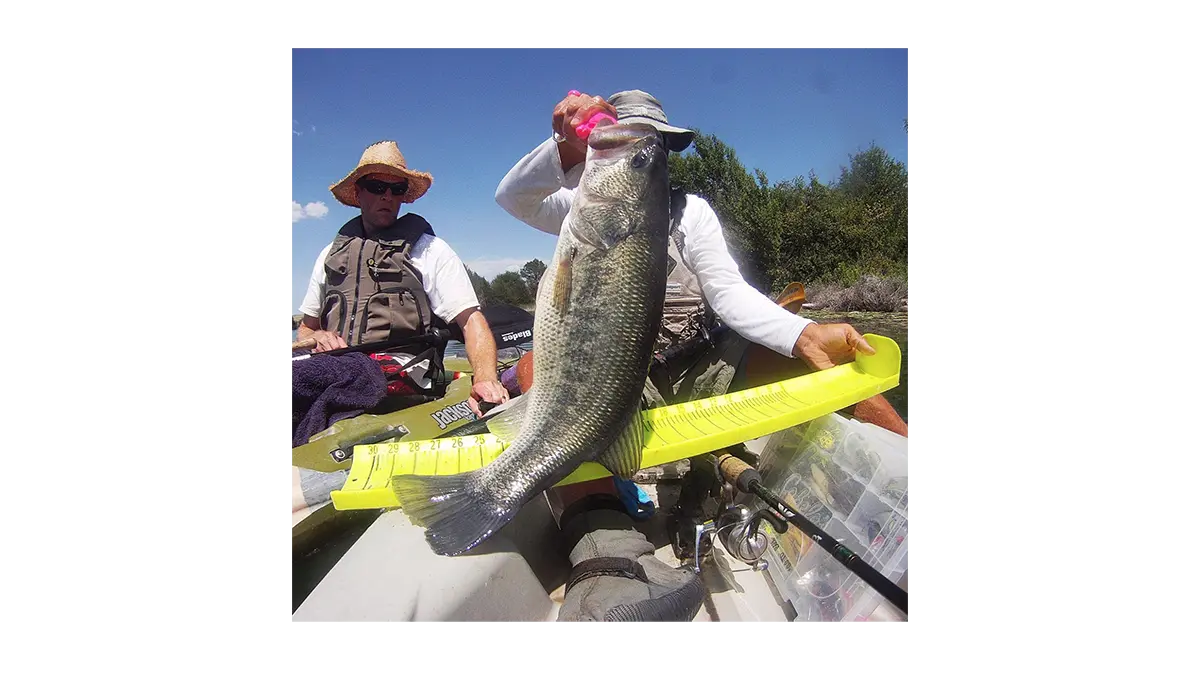












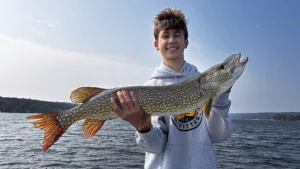
![[VIDEO] Huff’s 3 Must-Have Baits for Bass](https://www.wired2fish.com/wp-content/uploads/2025/11/huff-website-300x169.webp)
